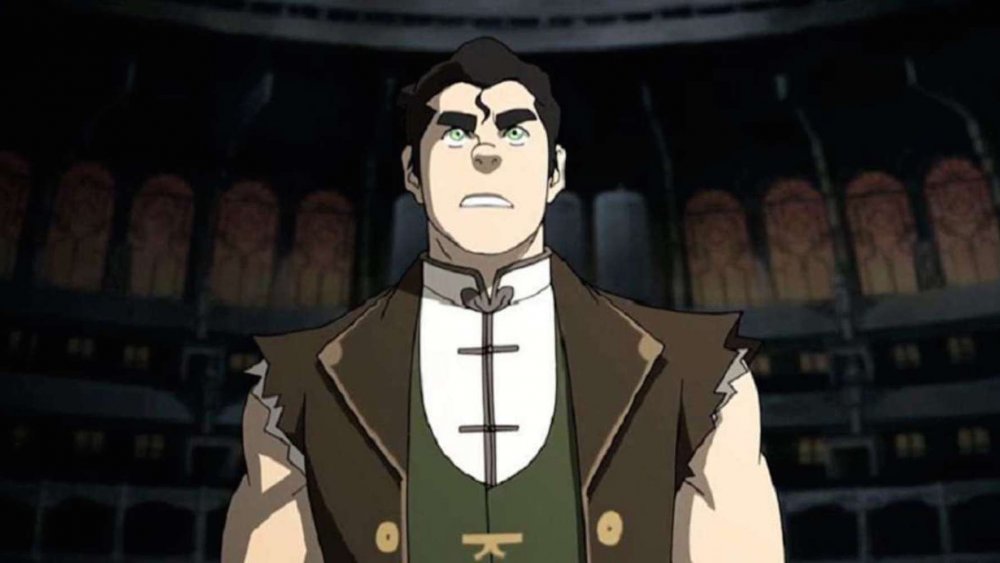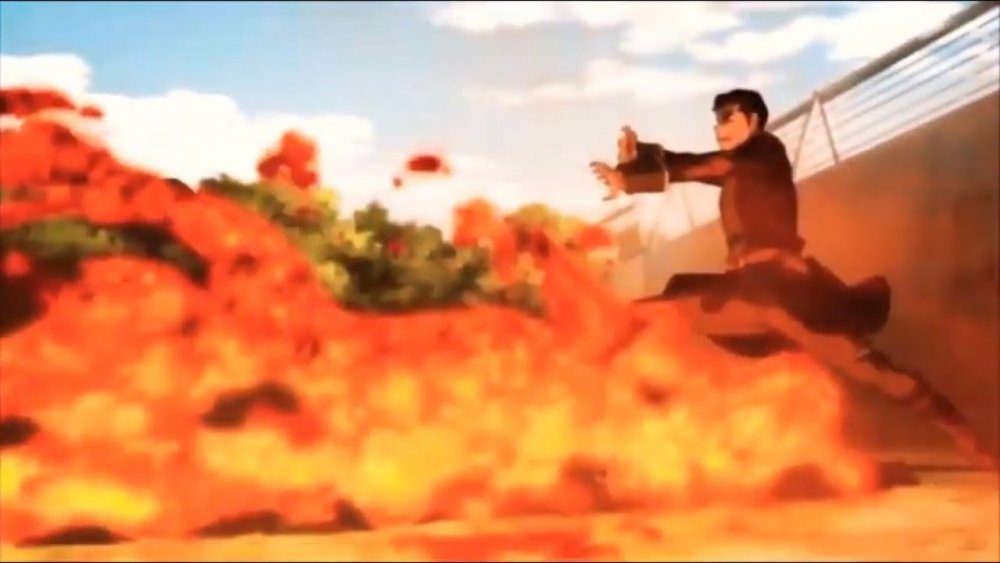Why You Don't See More Lavabenders On Avatar: The Legend Of Korra
The world of bending is actually a lot more nuanced than Avatar: The Last Airbender's overly simplified introduction about the four elements would have you think. Within each elemental school, there are a number of specialized bending skills that only a very few benders can master. Some waterbenders can become swampbenders or bloodbenders, for example. Firebenders can be lightningbenders or, in rare cases, combustionbenders, and so on and so forth.
Many of these unique bending skills are revealed (or outright discovered) in the original series, but by the time we get to sequel series Avatar: Legend of Korra, it's clear that these refined arts have become much more widespread. One of the most intriguing sub-bending talents is lavabending, a specialized class of earthbending that doesn't even make its first appearance until Legend of Korra. Lavabenders can control the motion, creation, and flow of molten lava. While this might sound like more of a firebending ability, remember that lava is actually molten rock, meaning the control of lava is more akin to the way waterbenders can freeze and melt ice at will, since these are simply two phases of the base element water.
Since it's clearly been established within the consistent metaphysics of the series that talented benders can easily control the internal energy of their elements, instigating phase changes at will, it makes sense that earthbenders would have the ability to manufacture and manipulate molten lava. What doesn't make sense, is why we haven't seen more of them. Just about every waterbender on the show has demonstrated the ability to melt and form ice and snow from their base element. With that in mind, the ability to melt and manipulate rock should be just as common, so how come we don't see any lavabending until Legend of Korra? It remains one of Avatar's most nagging unanswered questions.
A few savvy fans on Reddit have some intriguing theories about why lavabending might be such a rare art.
The answer lies in the nature of earthbending itself
Avatar creators Bryan Konietzko and Michael Dante DiMartino have been very meticulous in their worldbuilding. It would certainly be strange if the relative rarity of lavabending was a simple oversight on their part.
In a Reddit thread entitled "Why aren't there more lavabenders?," the fans have been discussing this issue, and they've come up with some pretty compelling solutions. The most popular derives from an oft-overlooked aspect of bending — the physical and philosophical differences inherent in each element's teaching.
"I have an idea as to why only few people know how to lavabend and its [sic] a simple idea," wrote u/joke_not_found. "Hardly any earth bender has been near volcanoes to experience lava. The fire nation has more volcanic activity than the earth kingdom. Toph couldn't bend metal until she was in a metal cage, concluding that maybe earth benders need to be up close to lava in order to learn how to bend it. Bolin for example learned he had an affinity to lava once he had to face it head on."
Most fans on the thread agreed that this was a pretty good theory. "Like Toph said during Bitter Work," another user added, "to be an Earthbender you need to face it head-on. Don't think many people would take the approach to lava when they could just create moats and divert it."
"Bitter Work" is, of course, the episode of The Last Airbender wherein Toph (voiced by Jessie Flower) attempts to train Aang (Zach Tyler Eisen) in the ways of earthbending.
So is it simple lack of exposure that prevents most earthbenders from having the requisite opportunity to confront molten rock head on? It certainly explains why waterbenders have such an easier time manipulating ice and snow. The Northern and Southern Water Tribes never lack for cold weather.

